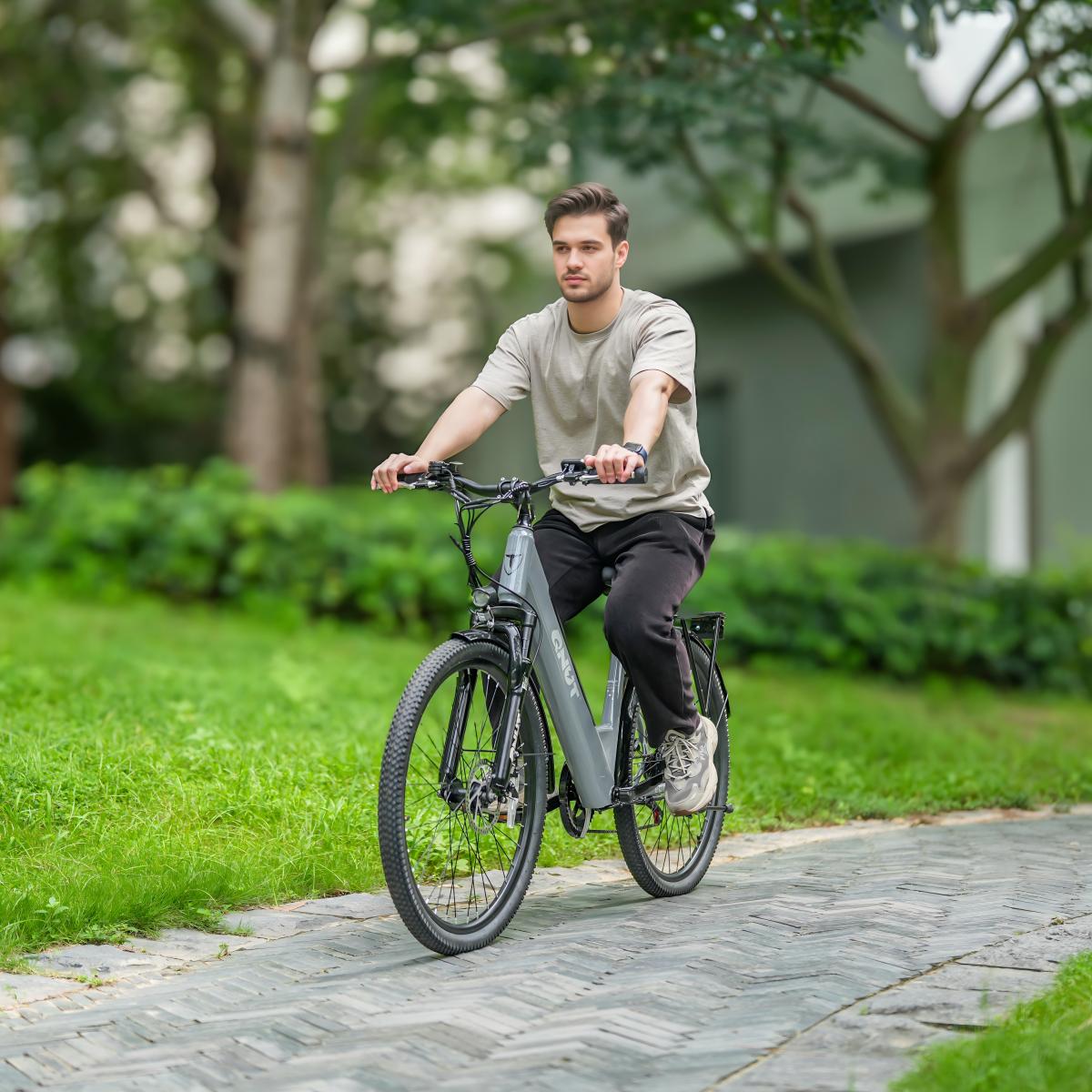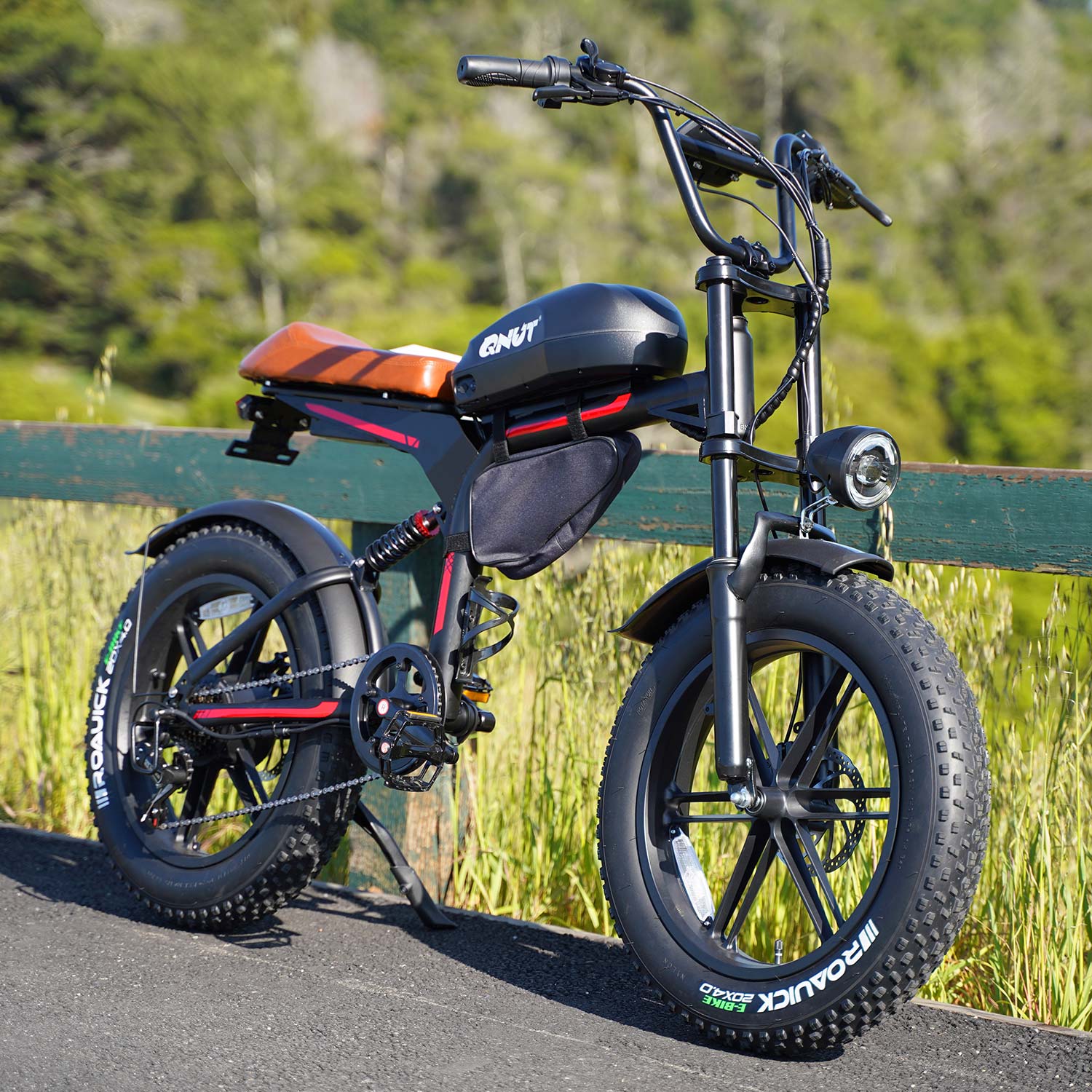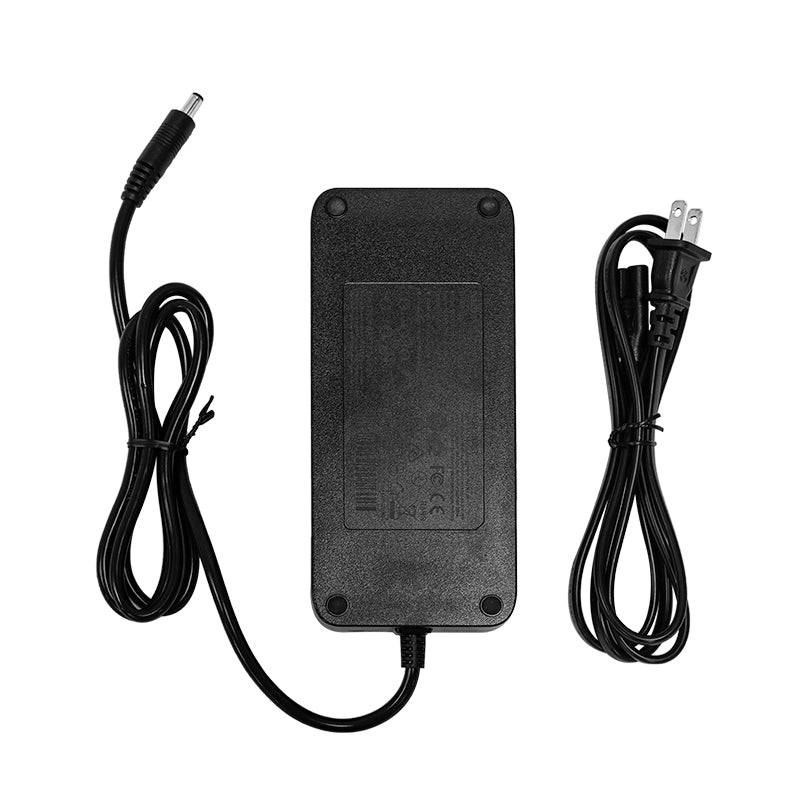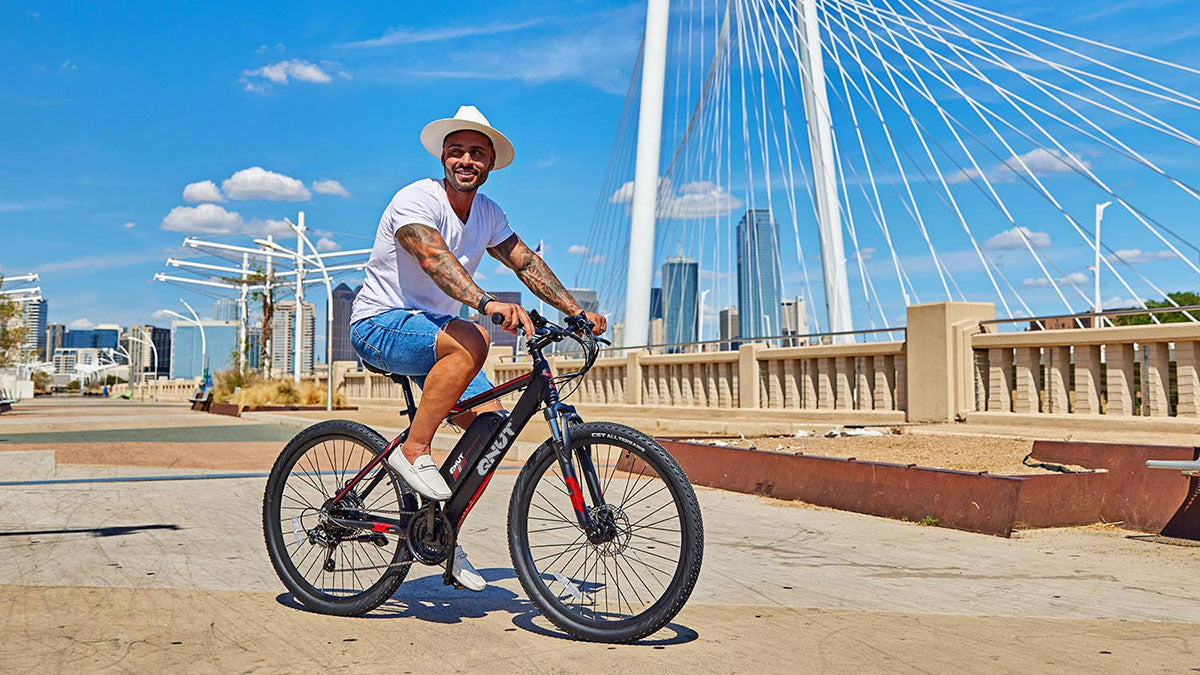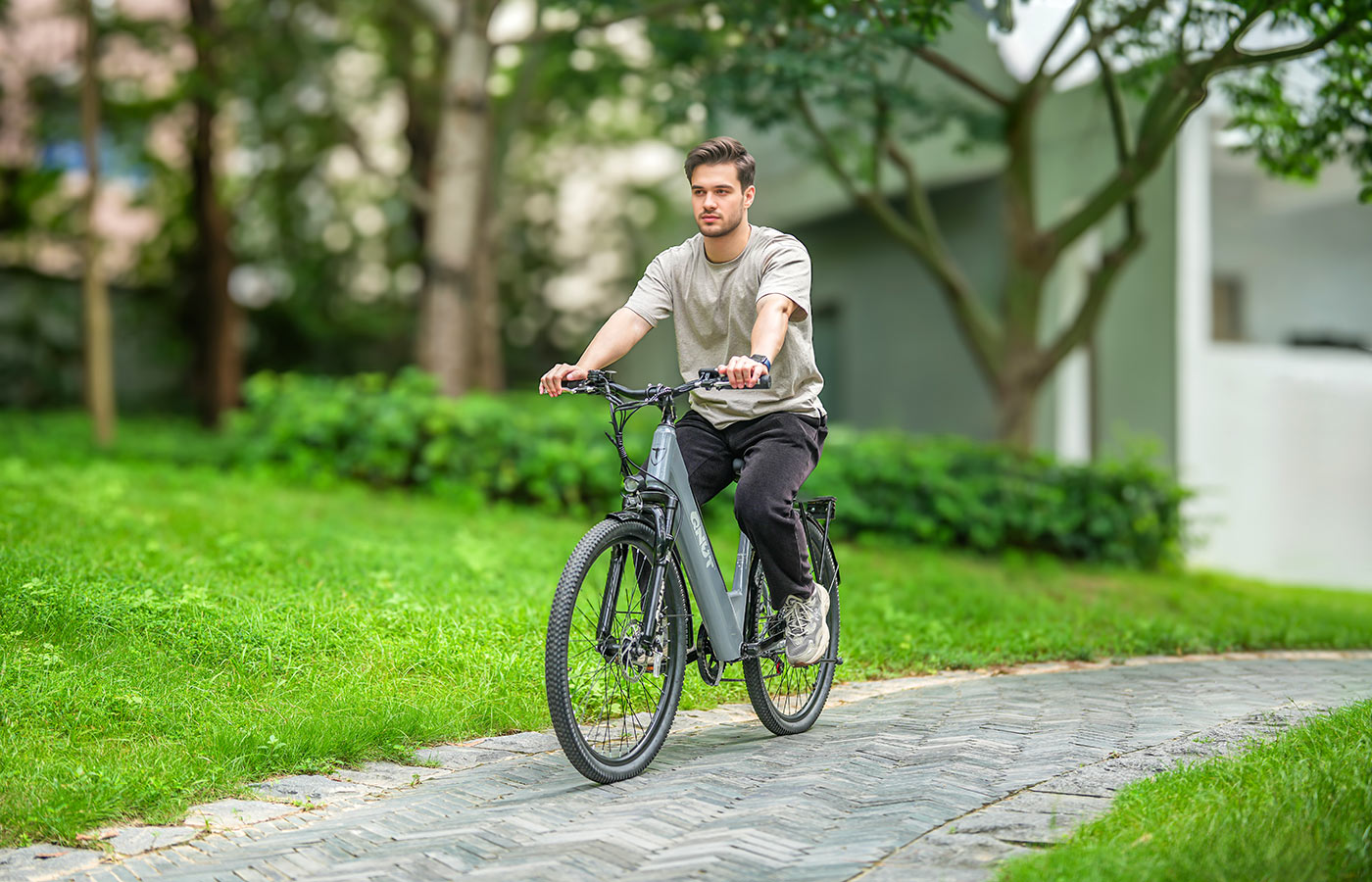
The Beginner’s Guide to Commuter Ebike Maintenance
Written by Victoria, Operations Manager at QNUT. With 5+ years of experience managing e-bike operations across the U.S. and EU, she specializes in helping riders get the most out of their commuter ebikes.

That brand-new electric bike felt amazing on your first ride, but how do you keep it running that smoothly? If the thought of e-bike maintenance sounds complicated or expensive, you're in the right place.
This complete guide breaks down everything into simple, repeatable steps. In the next 10 minutes, you'll learn a routine that can save you over $200 a year in professional tune-ups and prevent the most common (and annoying) e-bike issues.
Why Commuter Ebike Maintenance Matters
Owning a commuter ebike is like owning a reliable car—you expect it to start, stop, and get you where you need to go every day. Regular maintenance ensures that:
- Safety comes first: Proper brakes and tires prevent avoidable accidents.
- Lower total cost: Preventive care avoids costly repairs.
- Better performance: A clean drivetrain and healthy battery mean smoother rides and maximum range.
Data you can trust: According to the U.S. Department of Transportation (2024), the average urban commuter spends dozens of hours per year in traffic. A well-maintained ebike helps you avoid preventable delays and ensures reliable daily commuting.
Commuter Ebike Maintenance Schedule (At-a-Glance)
- Before Every Ride (30 Seconds): Check tire pressure by squeezing, test brake levers, and confirm battery level.
- Weekly (5 Minutes): Wipe down and lube the chain; visually inspect lights and reflectors for function.
- Monthly (30 Minutes): Check for loose bolts on racks/fenders, and do a deeper inspection of brake pads and tire tread.
- Quarterly (1 Hour): Deep clean the drivetrain; check for app/firmware updates (if applicable).
- Annually: Book a professional tune-up (typical range: $75–$150) for bearings, wheel truing, and diagnostics.

Essential Maintenance Checklist for Commuter Ebikes
1) Tires & Wheels
- Pressure: Check weekly. Most commuter tires perform best at 40–65 PSI (always verify your tire’s sidewall).
- Tread wear: Replace if bald, cracked, or the puncture belt shows.
- True wheels: If the rim wobbles side-to-side, visit a shop.

2) Brakes & Safety Systems
- Pad thickness: Replace pads if less than 3 mm of material remains.
- Rotor/pad cleanliness: Squeaks often mean contamination—clean with isopropyl alcohol.
- Lever feel: Should be firm and responsive, not spongy or pulling to the handlebar.
Safety stat: The NHTSA notes that a significant share of bicyclist injuries happen in low-light conditions. Working lights and reliable brakes are essential for urban riders.

3) Chain & Drivetrain
- Wipe weekly with a dry rag to remove grit.
- Lube every 100–150 miles with a bike-specific lubricant; wipe excess to avoid grime build-up.
- Replace chain roughly every 1,500–2,000 miles (usage and conditions vary).
4) Battery & Electronics
- Charge window: Day-to-day, keep the battery roughly 20–80% to reduce stress on the cells.
- Storage: If unused for weeks, store at ~50% charge in a cool, dry place.
- Heat: Avoid leaving the battery in hot cars or direct sunlight; heat accelerates cell aging.
- Connectors: Inspect and keep clean/dry; look for any signs of corrosion.
Battery fact: As summarized by Battery University, poor charging habits can materially shorten lithium-ion lifespan.

5) Frame, Lights & Accessories
- Post-rain wipe-down: Prevents corrosion on bolts and hardware.
- Secure mounts: Check racks, baskets, and mudguard bolts monthly to ensure they're tight.
- Lighting: Test weekly; bring spare batteries if you use clip-on lights.
Guidance from the Portland Bureau of Transportation encourages weather-ready setups (fenders, lights, reflective elements) to maintain ridership in rainy seasons.
Troubleshooting: Quick Fixes for Common Problems
🔋 Battery won’t charge
- Verify the outlet, charger LED, and wall switch (if any).
- Inspect charge port and connectors for dirt or corrosion; clean gently if needed.
- If still unresponsive, contact your brand’s support or a certified shop.
⚠️ Brakes feel spongy
- For cable discs: increase cable tension and check for frayed housing.
- For hydraulics: the system may need a bleed (shop service) or pad replacement.
🔗 Chain slips under load
- Clean and relube first; check chain wear with a tool.
- Persistent slipping can indicate a worn cassette or chainring—see a shop.
🔊 Clicking while pedaling
- Check pedal/crank bolts and seatpost clamp torque.
- Rule out loose bottle cages, racks, or fender stays.




Real-World Commuter Case Studies
Emily (Chicago)
- Situation: Commutes 12 miles daily.
- Action: Monthly chain cleaning and routine brake checks.
- Result: Annual costs kept under $80, saving $170+ compared to shop-only maintenance.
Carlos (Portland)
- Situation: Ignored brake pad wear until hearing metal-on-metal grinding.
- Action: Emergency shop visit.
- Result: Paid $180 for rotor + pad replacement. A timely $20 pad swap would have prevented the extra cost and downtime.
Sarah (New York City)
- Situation: Stores her bike during the winter.
- Action: Stored battery at ~50% charge and avoided summer heat.
- Result: Extended battery lifespan to ~4 years (vs. an estimated 2.5), saving ~$350 on a premature replacement.

Regional Cost & Time Estimates (U.S.)
- West Coast (SF, LA, Seattle): ~$100–$150 tune-ups.
- Midwest (Chicago, Minneapolis): ~$60–$90 tune-ups.
- East Coast (NYC, DC): ~$120–$180 tune-ups.
- South (Austin, Atlanta): ~$70–$100 tune-ups.
DIY time budget: ~15 minutes weekly + ~1 hour monthly.

Seasonal Care Tips
- Winter: Keep the battery indoors to protect it from extreme cold; use fenders to manage slush; wipe road salt off the frame and drivetrain.
- Rainy season: Dry your bike immediately after rides to prevent rust, paying special attention to the chain and electrical connectors.
- Summer: Avoid leaving the battery in a hot car or direct sun for extended periods; check tire pressure more frequently as temperatures rise.

FAQs About Commuter Ebike Maintenance
Can rain damage my commuter ebike?
Most commuter ebikes are water-resistant, not waterproof. They can handle rain, but you should always dry and clean your bike after wet rides to protect components and prevent corrosion, especially on the chain and electrical connectors.
Do I need special tools?
A bike multi-tool, a quality tire pump with a gauge, and a bottle of bike-specific chain lube will cover over 90% of beginner maintenance tasks.
When should I replace my battery?
Typically after 500–800 full charge cycles (roughly 3–5 years of daily commuting). You'll notice degradation as a significant drop in your maximum range. Lifespan varies greatly with temperature exposure and charging habits.
Is professional servicing mandatory?
Not for the basics, but an annual tune-up is highly recommended. A professional mechanic can check for things you can't easily see, like hub bearing wear, wheel trueness, and firmware diagnostics.
Free Download: The Ultimate Commuter Ebike Checklist
Save time and never miss a step. Print this single-page checklist and keep it in your garage or office for easy reference.
Final Thoughts
Commuter ebike maintenance isn't about being a pro mechanic—it's about small, regular habits that keep you safe, extend the life of your components, and prevent costly, frustrating downtime. With this simple routine and an annual checkup, you’ll enjoy a reliable, smooth ride all year long.
Have a Question or a Tip to Share?
What's the one maintenance task you never skip? Do you have a question we didn't cover? Leave a comment below!
At QNUT, we design commuter-ready bikes that are easy to live with and maintain.
- Explore the full QNUT Commuter Ebike Collection
- See the EC150 Commuter Ebike featured in this guide
Partager






